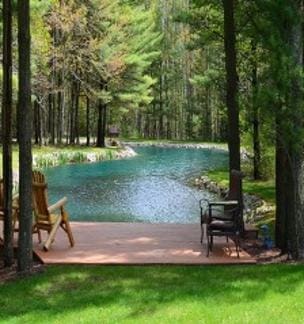Control the Weeds in Your Pond or Lake
Aquatic weed control starts with identifying the plant that you have to go to battle with. There are four types of weeds: Algae, floating plants, submerged plants, and emergent plants.
Consider Your Weed Control Needs:
Algae:
This is a very primitive plant. Some types are microscopic, such as planktonic algae. Other forms are thin and stringy.
With some being more hair-like. Many form a mat that floats up and lies on the top of the pond surface (called filamentous algae).
Floating plants:
This form is any type of plant that isn't attached to the bottom. There are very small versions of floating plants, such as duckweed, all the way up to large versions, which are over a foot in diameter, such as water hyacinths. Others are over a foot in diameter, such as water hyacinths. Most are present with roots hanging into the water. They float freely throughout the water column.
Submerged plants:
These have roots in their vegetative mass located below the surface of the water. Some portions may still protrude over the top of the water. A key characteristic is their flaccid or soft stems. This is one of the reasons they do not make it to the water's surface in most cases. Some varieties include hydrilla, milfoil, and ponder weed.
Emergent plants:
These plants have roots along the shoreline. They are above the surface and include plants such as cattails and reeds. These stems tend to be stiff and firm.
To control them, you need to know what's occurring. Then, the right herbicides can be used to control the problem.





